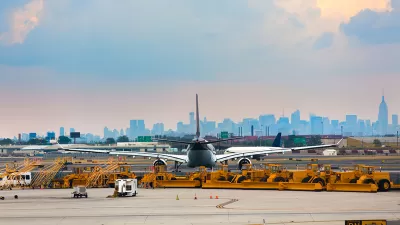We’ve been conducting public meetings for years. And it used to be easier. Present the plan. Discuss the plan. Talk about how your plan is better for the neighborhood/community/city/region and provide the conclusion. But things have changed.
We've been conducting public meetings for years. And it used to be easier. Present the plan. Discuss the plan. Talk about how your plan is better for the neighborhood/community/city/region and provide the conclusion. But things have changed.
When did the public become planning experts? People appear at public meetings and talk about density and land use. They know how many units per acre are good and bad. Of course, they tend to be wrong, as they do not discuss design. Still, public meetings have become the forum for the public to debate density with experienced planners and designers.
Recently we were in a contentious public workshop with a community, developer, and planning commission, focusing on a ten-acre site between a large public park and single family neighborhood. The logical approach is to have higher density across from the park and transition to a few stories next to the neighborhood. Or so we thought. Instead, the community wound up in a heated discussion about density. A height of five stories at a density of 25 was scoffed at as much too dense-next to a 40-acre park that the city is spending 40M$ on acquiring and improving and refers to as their "central park."
Density has become a four-letter word. But mention sprawl and the public scoffs at the lack of sustainability. And they can't have it both ways. The discussion needs to be about design and sustainability.
My old favorite assignment for students was to find out the allowable FAR in major cities. As I recall, at that time the FAR in Atlanta was among the highest in the northern hemisphere. Students thought FAR was by far higher in Manhattan. Not so then. My new favorite assignment is to show photos and ask students to describe the density. Good design does not illustrate density. Density is a relative term that describes quantity, not quality. It is design that will make or break a project.
By now you've figured out that nothing bothers me more in a public meeting than a debate on density. Neighbors in an Atlanta neighborhood with a density of about four units per acre argue that they have traffic issues and need light rail before there can be more development in the city. When we tell them they need a density of 15 to 20 per acre for transit, they cringe. It is not density and sprawl that is their issue-it is good and bad design. We have to change the conversation.

Planetizen Federal Action Tracker
A weekly monitor of how Trump’s orders and actions are impacting planners and planning in America.

Restaurant Patios Were a Pandemic Win — Why Were They so Hard to Keep?
Social distancing requirements and changes in travel patterns prompted cities to pilot new uses for street and sidewalk space. Then it got complicated.

Map: Where Senate Republicans Want to Sell Your Public Lands
For public land advocates, the Senate Republicans’ proposal to sell millions of acres of public land in the West is “the biggest fight of their careers.”

Maui's Vacation Rental Debate Turns Ugly
Verbal attacks, misinformation campaigns and fistfights plague a high-stakes debate to convert thousands of vacation rentals into long-term housing.

San Francisco Suspends Traffic Calming Amidst Record Deaths
Citing “a challenging fiscal landscape,” the city will cease the program on the heels of 42 traffic deaths, including 24 pedestrians.

California Homeless Arrests, Citations Spike After Ruling
An investigation reveals that anti-homeless actions increased up to 500% after Grants Pass v. Johnson — even in cities claiming no policy change.
Urban Design for Planners 1: Software Tools
This six-course series explores essential urban design concepts using open source software and equips planners with the tools they need to participate fully in the urban design process.
Planning for Universal Design
Learn the tools for implementing Universal Design in planning regulations.
Heyer Gruel & Associates PA
JM Goldson LLC
Custer County Colorado
City of Camden Redevelopment Agency
City of Astoria
Transportation Research & Education Center (TREC) at Portland State University
Camden Redevelopment Agency
City of Claremont
Municipality of Princeton (NJ)



























